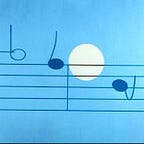Going back, Jack
I began the #AudioYearbook project on Twitter in spring of 2021, spurred by boredom, a love of music, and finding a cadre of like-minded music fans (courtesy chiefly of the rabbit hole that is Pia_Lemonade).
The project idea was pretty simple: produce a 90-minute playlist of songs from one year, a throwback to 80s / early 90s joy of making mix-tapes, as well as being a salute to the glory that was KFOG’s Ten@10. With input from over 60 Tweeters, playlists were created covering 1955 through 2020, weighing in at 98 hours and nearly 1,600 tracks.
Thanks to The Somnambulist (sotachetan on Twitter), #AudioYearbook2 has been spun up. And my year is 1972.
In reviewing top news events of 1972, the year I turned 7, key themes of death and change predominate; notable firsts and lasts include the development of the compact disc and the Apollo 17 mission, respectively. The Godfather riveted audiences, and Carole King swept the Grammys on the basis of the previous year’s Tapestry. She also topped the US album charts in ’72, along with Elton, Don McLean, Neil, America, Roberta Flack, Tull, the Stones, Chicago, Curtis Mayfield, Cat Stevens, and The Moody Blues.
Although the charts provide the best-seller view, it certainly doesn’t tell the whole story. In the previous AudioYearbook journey for ‘72, the focus was on the explosion of glam rock and acoustic/singer-songwriter artists, which was a great way to hear the year. But even that provided but a sliver of the goodness ’72 has to offer, and I certainly wear my biases proudly in providing a sonic smorgasbord.
A is for Assortment
There’s really no other decade than the 70s where prog, power pop, jazz-rock, and plaintive ballads can coexist so harmoniously. The seven tracks of Side A stand the test of time: highlights of a year of depth and variety without sounding dated in the least.
We kick off with a prog-rock stunner: the epic keyboard intro provided by Tony Banks leads into a frenzied staccato worked up by Collins, Rutherford, and Hackett. There wasn’t much that sounded like this in ‘72.
Elton brings us back into more sonically-familiar territory, with one of his most beautiful melodies perfectly partnered with Taupin’s ode to making sense of a city decaying from the inside out. From there, Kenny and Jim take us from the simple pop song form to jazz exploration territory, thanks to some killer flute work by Jon Clarke.
We go from anger to melancholy, courtesy of two gems from Todd and the Allmans — each completely different but still tugging the heart in all the right places. Our gentle respite continues as we turn back to prog for the pomp and glory of one of the GOAT albums of the genre, and then end Side A with an electric raga funneled through the East-LA barrios via New York City.
B is for Bangers
There’s nearly twice as many songs stuffed into Side B, a sign that we’re a bit more pop-oriented this time around. True ‘dat: From a little tin pan alley ditty about global domination, thru the epitome of power pop and winding up with a glam rock screamer, the table is set of a main course of hooks, toe-tappers, and sing-alongs to put paste a permanent smile.
When the screams of Rod’s Hammond B 3 die down we’re lulled into the gentle cuddle of Karen’s gorgeous tones on one of the sweetest pop gems ever laid to wax. From violin strings to guitar strings, David Gates’ paean to lost love breaks the hearts of all comers, and we end the ballad portion of the set with some East Bay Grease of the finest and tightest variety. Yes, bangers can be ballads.
The soul continues as Stevie breaks it down hard, and the horns trilogy winds up with the pride, or at least one of the prides, of the Jersey Shore. The Main Ingredient and Van The Man carry the soul torch into the final track, where Jimmy throws down a both timeless reminder and an eternal rump shaker.
C is for conclusion
This list is published on my fifty-sixth birthday, and I’ve been a freak for music for at least forty-six of those years. All that mileage informs my opinion that nothing can touch the 70s decade for musical muscle, creativity, variety, passion, and fun. I recently finished David Hepwith’s 1971: Never A Dull Moment — Rock’s Golden Year and it gave a me a deeper appreciation for that sonic miracle that was, where culture, history, current events, economics, and the destruction of the 60s mythos helped give rise to rock star as demigod, and boy did they produce the music to prove it. The magic bled into 1972, and held sway over the remainder of the decade. Although I have a deep appreciation for music of the 80s, it just doesn’t hold a candle in toto to what came before.
I hope that #AudioYearbook continues. I look forward to everyone’s perspectives, and to maybe even be shown the error of my ways.
